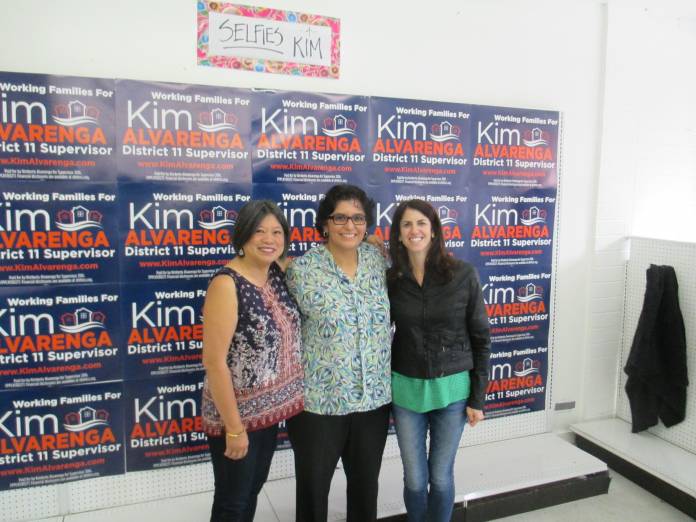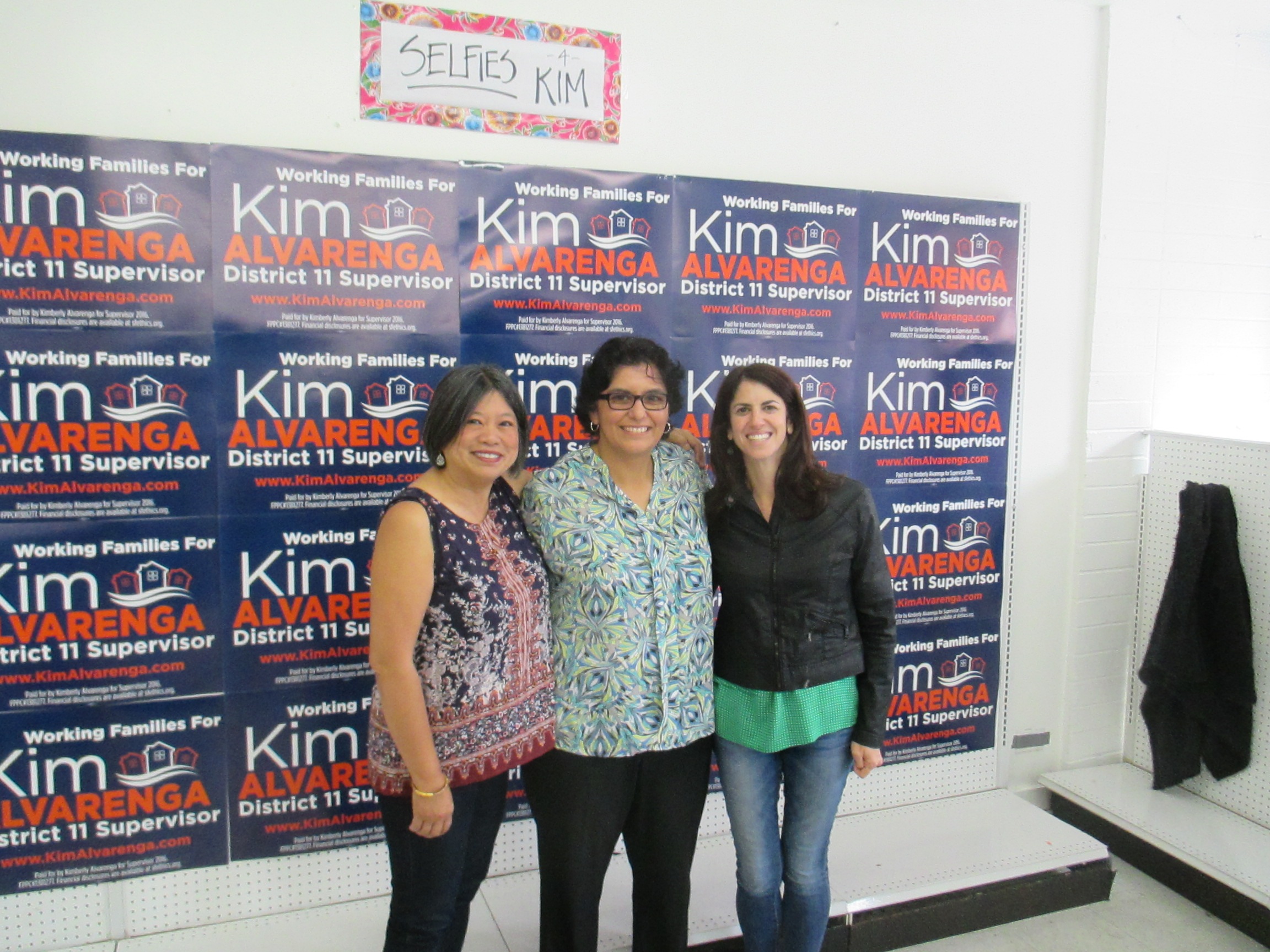
You could fill half a library with all the post-election analyses, recriminations, post-mortems and debates over the worse debacle to hit the Democratic Party in decades. We all know the outlines of the story: The Clinton campaign vastly underestimated Trump’s strength. The high-paid folks who ran the billion-dollar effort didn’t seem to notice what Bernie Sanders had tapped into – a fundamental mistrust for an elitist economic system that has left so many behind.

The message was all wrong: “Stronger together” is a great union slogan, because workers fighting management really are together, but it was a terrible slogan for a national election in an era where most voters don’t feel “together” with the people running the country. They didn’t want to hold hands with Wall Street and corporate America and the lobbyists and the DC Power Structure; they wanted to take those assholes down. They feel as if they’re in a fight, and they want someone who will be on their side – and not on the other side. Bernie got that; Hillary didn’t.
But there’s another interesting take on all of this, one that turns the traditional concept of an advertising-driven campaign on its head.
Steve Phillips, a former SF School Board member who is now a bestselling author and founder of Democracy in Color, has a fascinating piece in The Nation that argues, in essence, that the Democrats need to stop spending so much money on TV and direct mail and put more of it into frontline community organizing.
Clearly, the plans and programs of those who orchestrated $1.5 billion in Democratic and progressive spending last year failed—miserably. What we now need is a bottom-up revolution of transparency and accountability, and the touchstone of that accountability is challenging the Democratic Party to move massive amounts of money into the front line states in order to dramatically increase the number of progressive voters. This can be accomplished for a fraction of the cost of what is spent every cycle.
Based on past patterns, over the next two years, the Democratic Party committees and allied outside groups will spend in excess of $500 million between now and November 2018. Traditionally, most of that money goes to paid advertising (generally unmemorable and ineffective) designed to sway supposedly swing voters. Fortunately, there is a much better and more effective way to deploy political dollars. Employing a community-based voter mobilization model (what UC Berkeley professor Lisa Garcia Bedolla calls a “Civic Web”) of paid, community-based staff working with local volunteer neighborhood captains, an investment of $1 million can increase voter turnout by 20,000 people. Investing the full $500 million in this fashion could swell the ranks of progressive voters by nearly 10 million people. That is how we take the country back.
Phillips isn’t promoting the old Howard Dean “50-state Strategy,” which is great for building future strength. He wants us to put all of our resources into the “17 states and 13 Congressional districts that will determine future political control of this country.”
He says we don’t need to reinvent the wheel: With a fraction of the money that Clinton spent on advertising, staff organizers, working with existing community-based groups in those states, could have turned the election around.
Clinton’s campaign was a top-down operation that didn’t pay enough attention to, or send enough resources to, those front-line workers.
I am far from an expert in how to run a national political campaign. But on a much smaller level, I can tell you that we have plenty of local examples that seem to support the Phillips thesis
In the last Board of Supervisors races, the campaigns in District 1, 5, 9, and 11 used that model, at least to some extent. In D 1, Sandra Lee Fewer put precious resources into hiring paid field staff and canvassers, people going door to door every night talking to voters. In D9, Hillary Ronen put her early money into hiring and training staff – people who would spend long days and weeks organizing volunteers, putting together neighborhood events, and contacting voters.
Fewer and Ronen both ran against opponents who relied on “air” campaigns, with direct-mail attacks and messages run by traditional political consultants. You know how that worked out.
In D5, challenger Dean Preston also put a lot of his resources into hiring staff and doing neighborhood organizing. He didn’t win, but he was taking on the incumbent president of the board, and he got more votes than most of the winners in other districts.
Kimberly Alvarenga took on Ahsha Safai in D11 with a campaign entirely driven by community organizing. She fell 400 votes short in an election that would have been very different if the Democratic Party and the labor movement had gotten it together to support the candidate who would best represent their issues.
“We went into the campaign with a bit of trepidation,” Angeles Roy, who managed Ronen’s campaign, told me. “We put so much into paid staff that we knew we could be criticized for spending too much too early. But by the summer we knew we were going to win.”
Roy said that all forms of communication, including direct mail, are important. “But nothing beats a neighbor talking to a neighbor.”
Nate Albee, a progressive political consultant who worked on the Ronen campaign, agreed. “Mail is important, you can’t ignore it,” he said. “But knocking on doors is always going to be worth a lot.”
Democrats spend a lot of money — $1.5 billion is a whole lot of money – on campaigns, and a huge amount goes to TV ads. Consultants love those ads, because they get paid to produce them and tend to take a commission (typically 15 percent) on every buy. There’s an entire industry of people who make a very nice living doing things the way we have done them for the past 20 years.
I’m not saying ads don’t work, or that mail and messaging isn’t important. But I think Phillips is onto something – if more of that money had gone to people who already know how to do grassroots organizing and how to reach voters, maybe I wouldn’t be waking up every morning wondering what horror show I’m going to find in the latest news.


Yeah, he did.
did he? He’s the most well-regarded politician in the country.
The Democrats have apparently lost over 1000 state and local positions over the past 8 years or so. They just lost the WH. One of the most experienced, accomplished and best-funded candidates ever to run for the presidency lost to a fraudulent carnival-barking demagogue.
Bernie lost.
I would point out that the one progressive supervisor candidate who was defeated was defeated by a candidate who also focused on door-to-door campaigning. While I did not support Asha, my step-daughter did, and she put in many hour (volunteer and paid) walking precincts, making phone calls, and helping to coordinate other volunteer campaigners.
Just validates your point that hitting the pavement (and phones) really works.
Talking directly to folks is undoubtedly key to helping win. But the content of the message is most important. I think the reason Bernie Sanders supporters were so effective is based in the truth of Bernie’s message about the terrible inequality in the US and the positive direction he offered. A solid truthful message that points to a positive direction for the overwhelming majority makes knocking on doors the most effective. I don’t believe the current Democratic Party leaders have a message that will resonate with most ordinary Americans anywhere, about jobs, about wars for the US empire, about our relationship with Saudi Arabian kings and princes, About Israeli occupation, about Wall St., about health care, about Social Security, about trade deals, about mass incarceration, about NSA and spying on all of us, about almost anything.
spot on, Tim. Bernie did get it, from the individuals creating a grass-roots movement without big money, big pharma, Wall Street, and the DNC (which is still sending out fund-raising emails from of all people, Donna Brazile) flicked away those efforts like pocket lint. The high paid folks who ran Clinton’s campaign did indeed notice what Bernie had accomplished; they just expected their acquiescence and silent obedience once the primaries were over.
It wasn’t the strength of Trump, or the apathetic RNC that won this elections, it was the Democrats’ weaknesses, myopic and insular elites who didn’t earn the support they selfishly thought they were entitled to.
Messaging is more important than knocking on doors because if you come to my door with a message that doesn’t inform/motivate me, you are wasting your time.
And here’s a thought: Someone with ‘message crafting’ skills can explain that. . .
*in order to provide healthcare, we don’t need to make the 1% even more money, at the expense of the sick.
*In order to create more jobs, we don’t need to make the 1% more more money, at the expense of those who live paycheck to paycheck.
*In order to educate our children, we don’t need to make the1% even more money at the expense of burdening our young people with enormous debt.